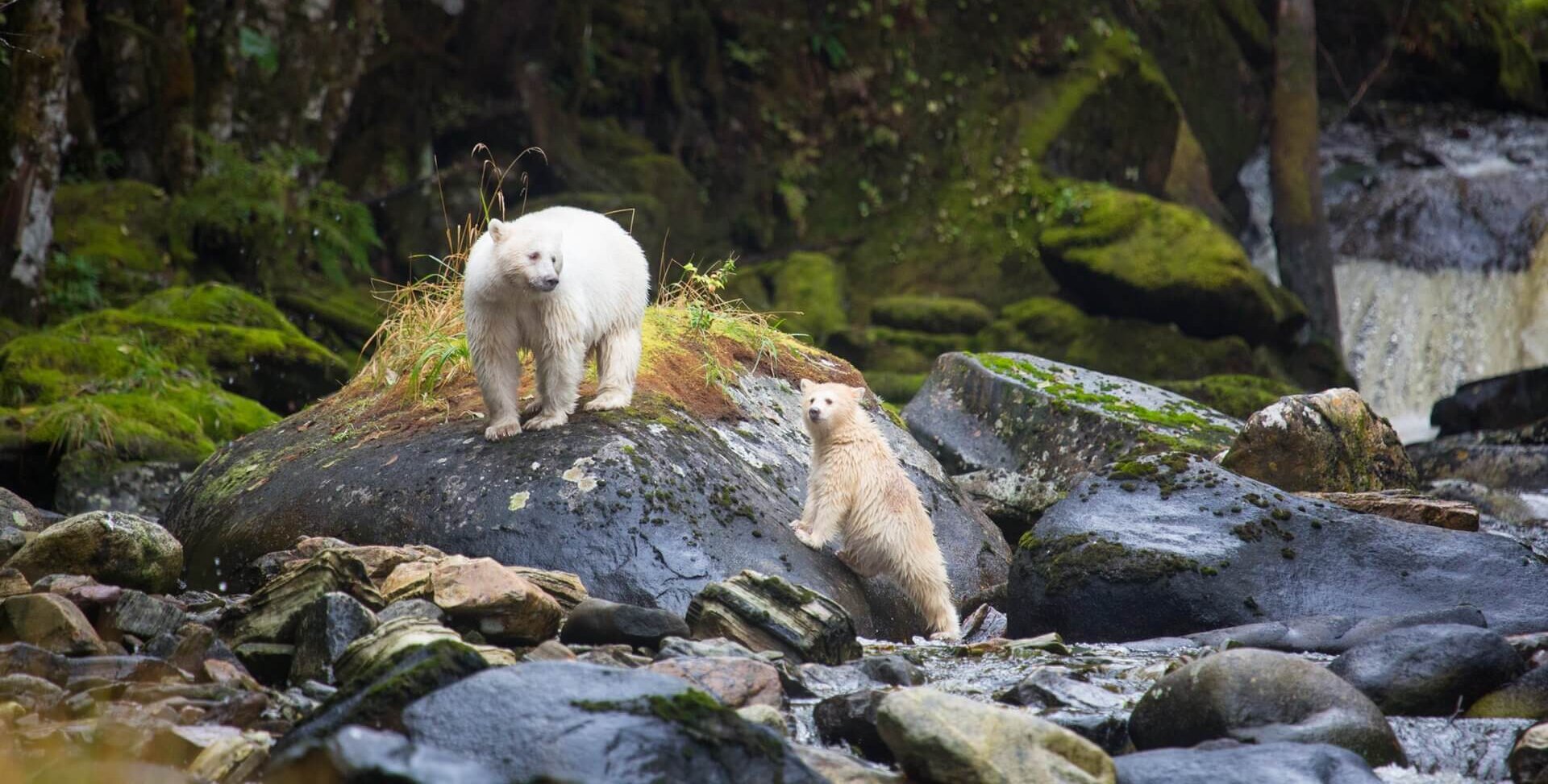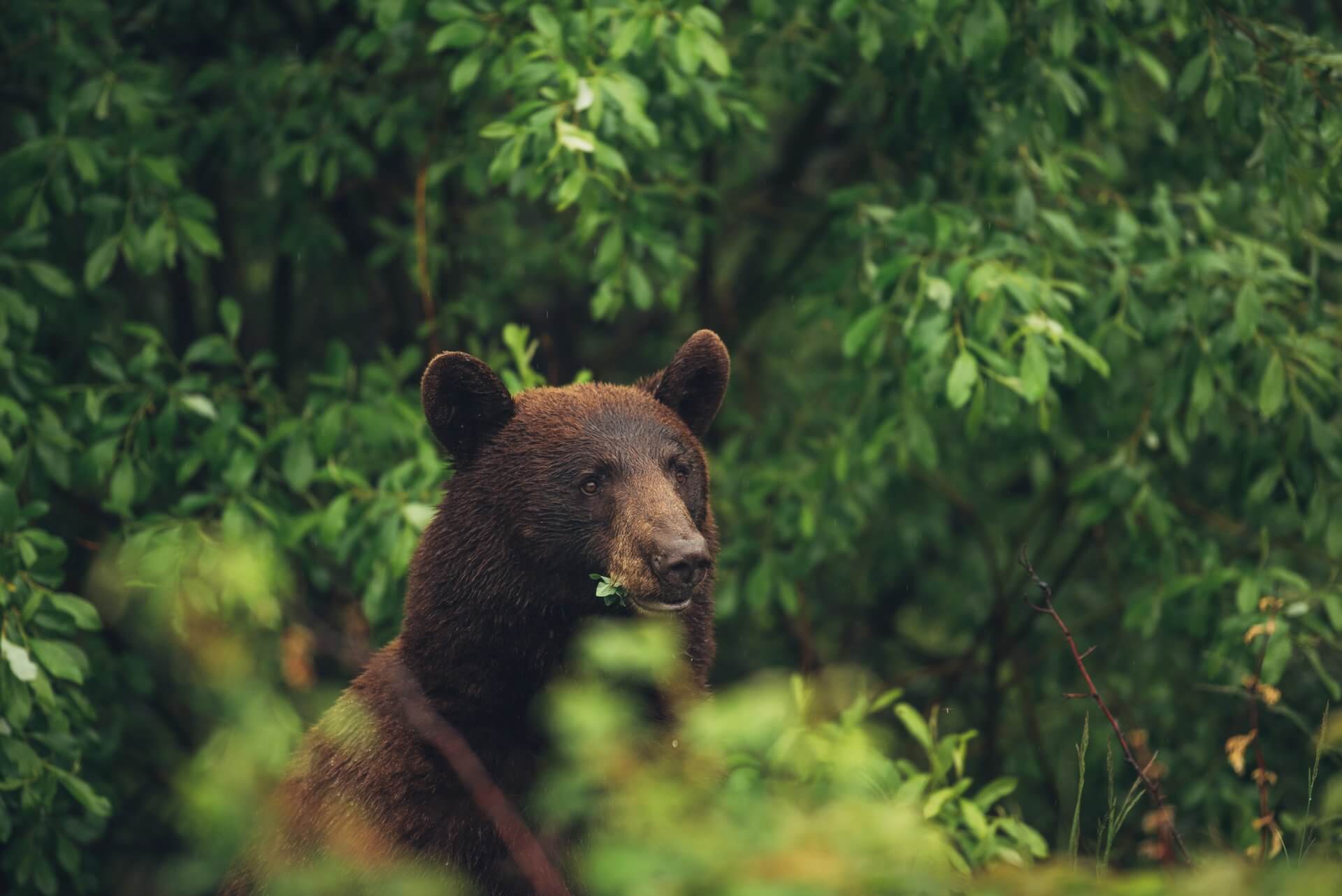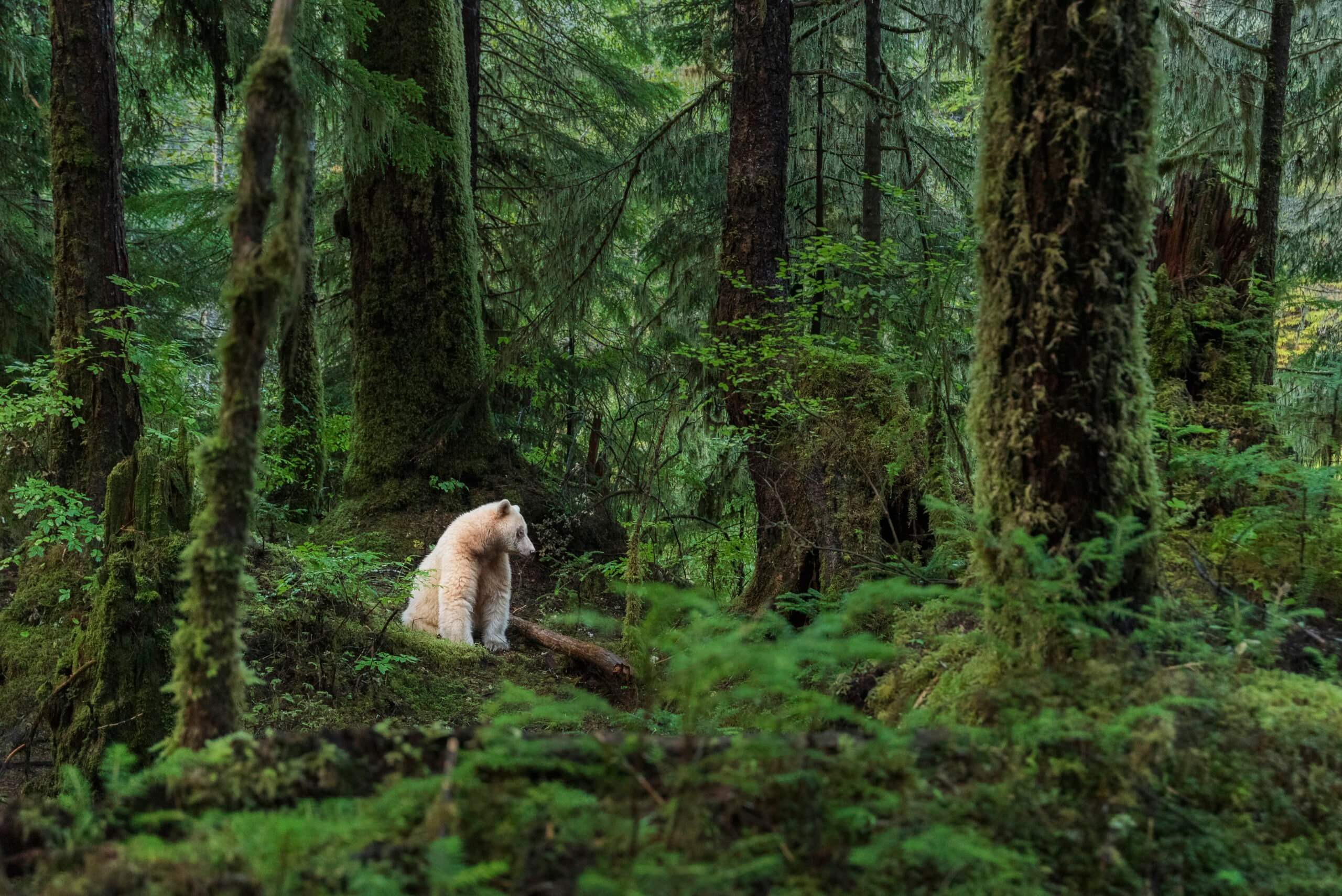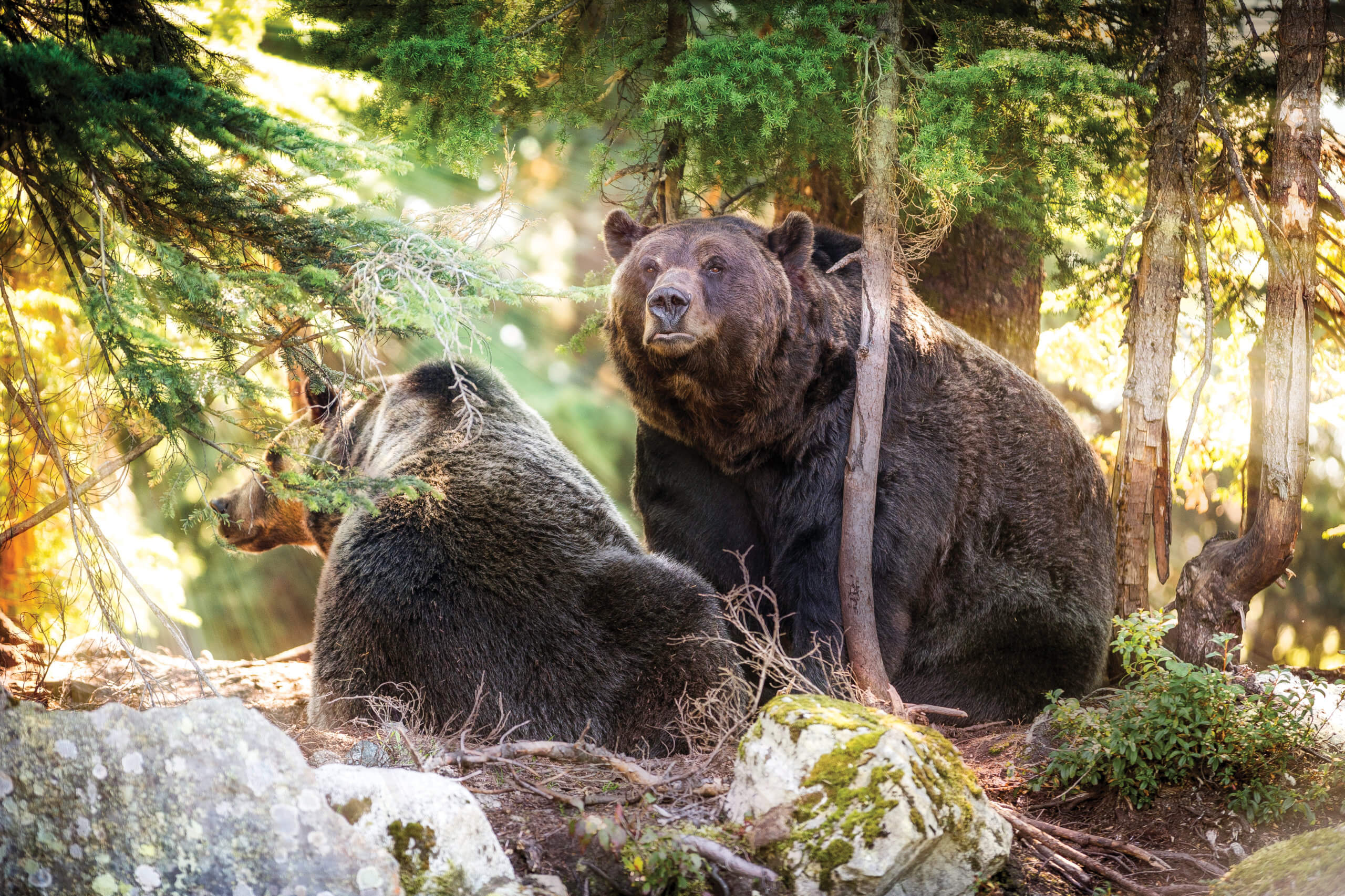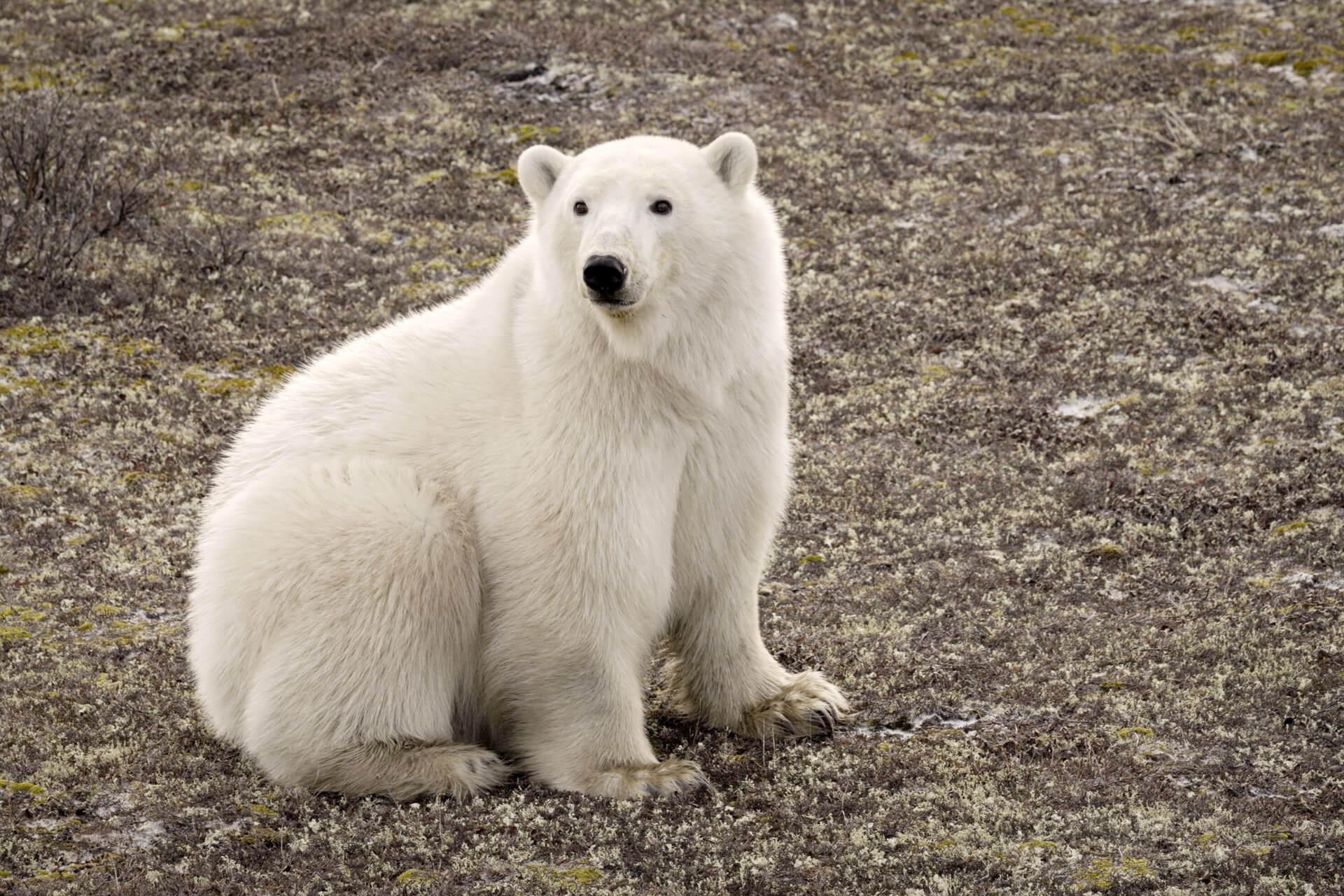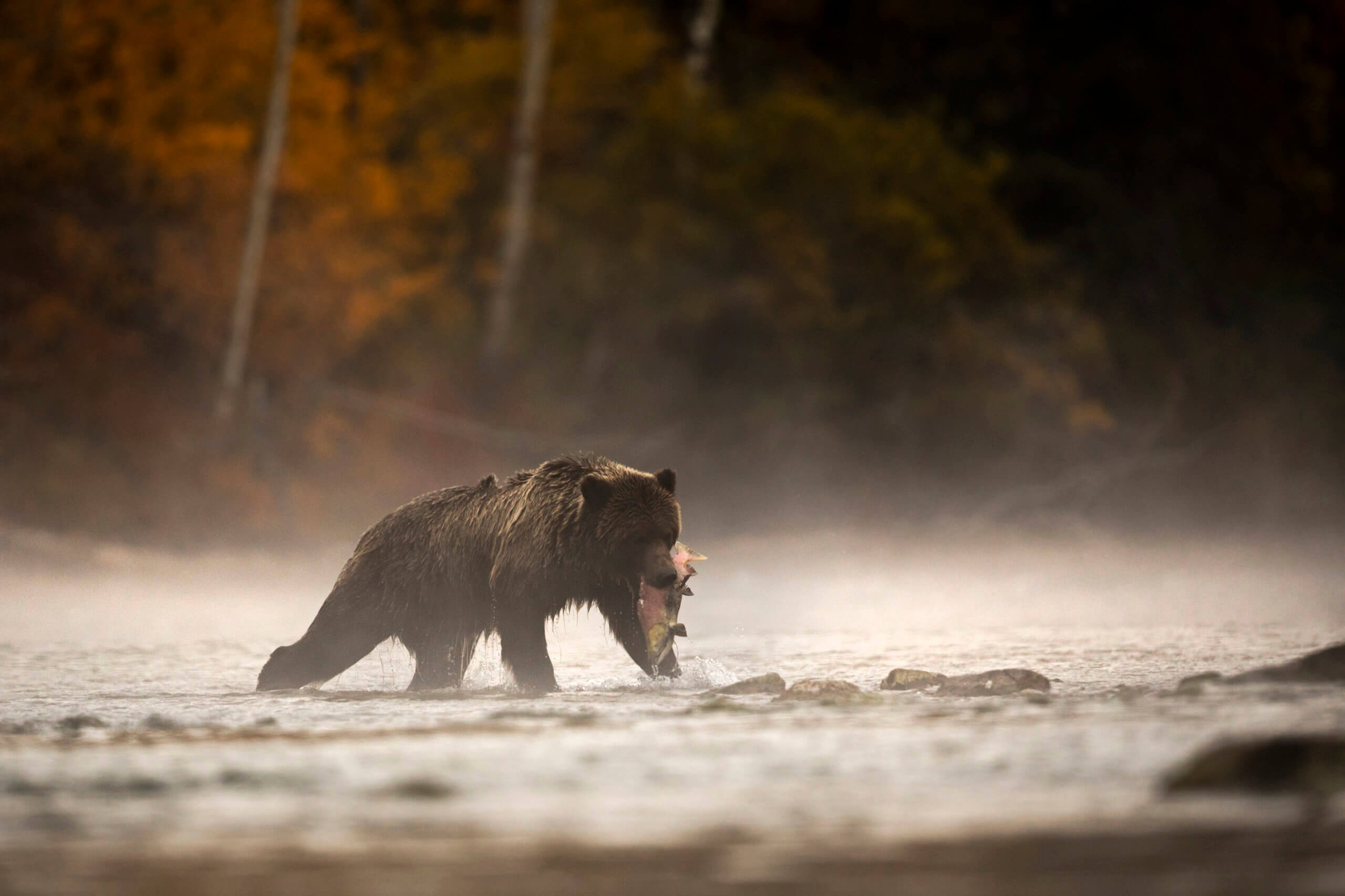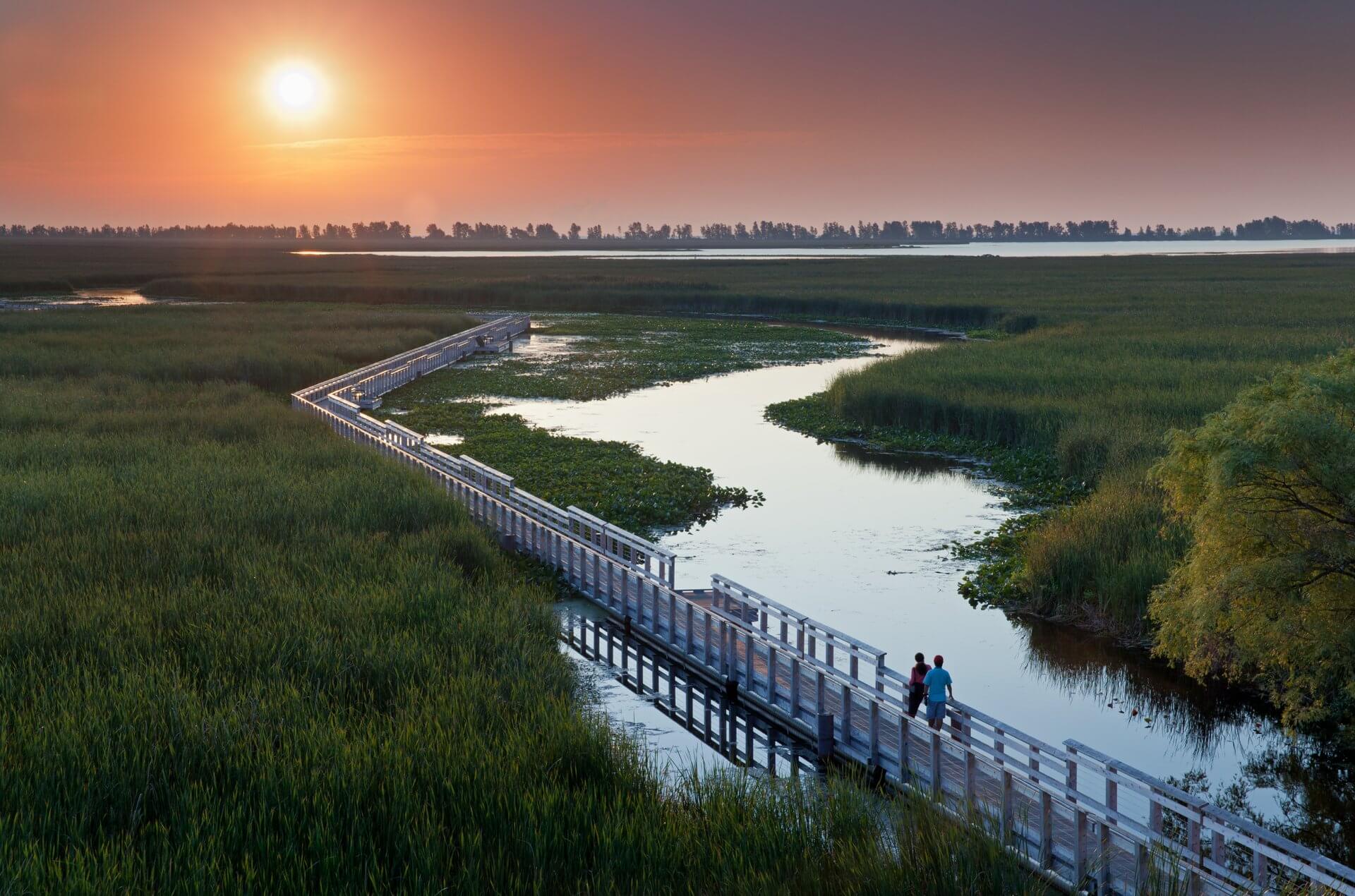Up Close & Personal With Canada’s Bears
Whether they terrify you or fascinate you, bears are undoubtedly a symbol of Canada’s wild side. These majestic creatures roam the vast wilderness throughout Canada’s forests, mountains and tundras — striking awe in those who cross their paths.
Want to learn more about these fierce yet cuddly looking mammals with which we share our land? Read on!
Bear fact: Canada is home to three species of bears: the American Black Bear, the North American Brown Bear (Grizzly) and the Polar Bear. The Kermode Bear (known as the Spirit Bear), although sometimes thought of as a separate species, is actually an uncommon colour version of the Black Bear.

Where do black bears live?
Black bears are the most abundant variety of bear found in Canada, inhabiting forested areas of nearly every province and territory. They are excellent tree climbers, can run up to 50 km/hour and are very good at avoiding human contact. According to the Nature Conservancy of Canada, black bears are usually active from dawn until dark, but those living closer to human populations have adapted to being mainly nocturnal so as to avoid contact with people.
Even if you do a lot of hiking, it is unlikely that you will come across a bear — make a lot of noise and it will get out of your way before you ever have a chance of spotting it!
Follow these tips from Ontario Parks for bear safety when camping in black bear territory.
How to tell black bears apart from brown bears?
As their name indicates, most bears of this type are black — but certainly not all of them! Black bears can in fact be a variety of shades, from dark black to brown to cinnamon, so colour alone is not enough to distinguish them from their brown bear cousins. One way to tell the two apart is that brown bears have a much more distinctive hump on their shoulders and tend to be larger. And if you are east of Alberta, you can be assured that the bear you spot is likely a black bear — as their territory is far more wide-reaching.
What do black bears eat?
As omnivores, black bears eat a variety of food including berries, nuts, insects and fish, as well as small mammals and birds. They communicate through a variety of vocalizations, including grunts and hums. As spring arrives, black bears slowly emerge from their winter dens to begin their warm-weather feasts.
How long do black bears hibernate?
Once their food source dries up in late fall, black bears will find a secure place (a hollowed out or fallen tree, for example) to make their den and settle in for the cold months. They enter a winter state of lethargic sleep that lowers their body temperature, metabolic rate and respiration. Bears are able to wake up from this shallow torpor if startled or threatened — although will typically “sleep” until the arrival of spring, the timing of which varies depending on region.
Are black bears endangered?
No, black bears are not endangered and hunting of black bears is allowed in some regions. Although black bears are not currently considered a species at risk, the elimination of habitat and the growing risk of climate change is always a concern. Black bears need space to roam and safe wildlife corridors — those protected places that allow wildlife to safely travel from location to location — are essential. Read our blog on Ontario’s Frontenac Arch Biosphere for more information on one of the last remaining wildlife corridors in Eastern North America.
Bear Fact: Black bears live in every province and territory in Canada — except Prince Edward Island!
What is a Kermode Bear?
The rare black bear with a white- or cream-coloured coat is only found in a small portion of the coastal regions of British Columbia. It goes by many names: Kermode bear, spirit bear, ghost bear and moksgm’ol (white bear).
The colour of the bear comes from an uncommon recessive gene. While no one knows exactly how many of these bears live in the Great Bear Rainforest region, the estimates range from 150-400.
The Indigenous people who live in the coastal regions of BC have a deep spiritual connection to these gorgeous bears. In the Kitasoo/Xai’Xais creation story, Raven created the white bear to remind people of the time when the earth was covered in ice — as a way of being thankful for the bounty of the present day. Indigenous nations have spearheaded conservation efforts to protect the habitat of these rare creatures.
Bear fact: In recent years, the spirit bear has become a strong symbol of Indigenous child welfare equity in Canada.
Where do grizzly bears live?
Beautiful and majestic, Canada’s grizzly bears are a North American subspecies of the brown bear and they can be found in western and northern parts of the country. It is estimated that Canada is home to about 26,000 grizzly bears, about half of which live in British Columbia. The remaining half are spread out in parts of Alberta and Canada’s three territories: the Northwest Territories, the Yukon and Nunavut. Grizzly bears have not been found to currently live east of Alberta.
Grizzlies make their home in a wide range of habitats, from coastal rainforests to alpine tundra.
What do grizzlies eat?
Like their black bear cousins, grizzlies are omnivores and will eat a variety of plants, nuts, berries and animals. Spawning salmon is a favourite food, but grizzlies will also hunt small and large land animals such as squirrels and deer. While their heft would indicate that they eat more meat than anything else, a grizzly bear’s diet is actually mostly made up of plants. Grizzlies have large claws that allow them to dig really well and the hump on their back is a large muscle that gives them extra power to flip over rocks and logs in search of food.
Are grizzly bears endangered?
Habitat loss, climate change and the breaking up of wilderness tracts are all putting stress on the species. While the grizzly bear is not on the endangered list, it has been identified in Canada as a species of special concern. While this grants the bear no special protection on a federal level, both Alberta (where the grizzly is provincially listed as a threatened species) and British Columbia have made commitments to sustaining grizzly populations and habitats.
Bear fact: The scientific name for the grizzly is Ursus arctos horribilis — and yes, horribilis is the latin root word of horrible, though in this case it is likely meant more to signify terrifying. Coming face-to-face with a grizzly could be a terrifying experience, no doubt. Here are some tips from Parks Canada on how to avoid a dangerous encounter.
Where do polar bears live?
The majority of the world’s polar bears live in Canada, taking up residence in the country’s ice-covered regions — from the Yukon in the west to Newfoundland in the east, including the northern parts of Manitoba, Ontario and Quebec. Known as sea bears, polar bears are arctic animals that depend on the sea ice for many aspect of their existence, including travelling and hunting. For this reason, polar bears are the bears most vulnerable to the effects of climate change.
Are polar bears dangerous?
Polar bears, the world’s largest land predators, have a reputation as powerful and dangerous carnivores. It might have something to do with their size: males can grow to be 8-10 feet tall when standing on their hind legs and weight upwards of 1500 pounds. For such large animals, polar bears can move surprisingly quickly, both on land and in water. They are used to navigating moving ice so agility is one of their strengths.
Here are some good safety tips when travelling to polar bear country from Parks Canada and the government of Manitoba.
What do polar bears eat?
Unlike Canada’s other bears, polar bears are carnivores. Their favourite meal is the ringed seal — the smallest and most abundant arctic seal — but they will also eat other types of seals as well as carcasses of whales like the beluga. Polar bears are expert ice hunters. They will seek out cracks in the ice or wait by ice edges for seals to come up for air. With their keen sense of smell, polar bears can detect seals beneath the ice and wait patiently for them to surface. An average bear can eat up to 46 kg in one meal.
Are polar bears considered marine mammals?
Because they depend on the ocean for their food and habitat, polar bears are the only bear species to be classified as a marine mammal. And polar bears, having evolved from brown bears many thousands of years ago, are incredibly adapted for life on the icy water.
The bears actually have black skin, but their thick, water resistant fur is translucent and appears white when it reflects light — allowing the bears to camouflage in their snowy environment. Incredible, right? The bear’s paws have also adapted to life on the water and act as a paddle allowing the bear to swim quickly and efficiently.
Bear fact: Scientists have observed the existence of polar bear-grizzly interbreeding, meaning that there are hybrid bears out there with mixed polar bear and grizzly parents. These hybrids are known as ‘grolar bears’ or ‘pizzly bears’!
Safe & responsible wildlife experiences
Safe encounters with wildlife such as Canada’s magnificent bears can be a life-changing experience. Browse our wildlife expeditions in British Columbia for a chance to see grizzlies, black bears and spirit bears in a safe and responsible manner and our Manitoba experiences for a chance to see polar bears in the wild in Churchill.

